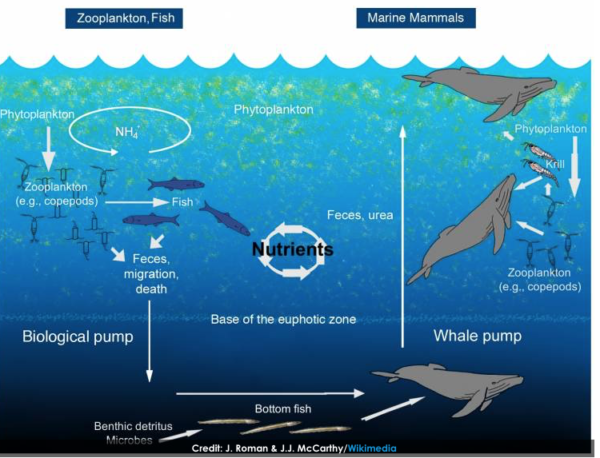Climate change is a huge problem that affects the entire world. As more and more problems caused by climate change rear their heads, our one hope at reversing them may lie with the gentle giants of the ocean.
Two Oceans Aquarium and three students, Matthew Lewis, James Griffiths and Stefan Von Der Heyden came together to bring us information about how our favourite mammals of the sea are making a big difference to our environment. This article is based off their research, complied in a blog called “Whales can help save the world from climate change”.
Long-term seasonal changes have occurred in our climate due to a massive accumulation of greenhouse gases in the atmosphere. Each of us leave a carbon footprint, meaning we release CO2 while going about our energy-consuming daily routines.
Over the years, evidence that humans are the main contributors to climate change has grown, and threats to the environment because of us are ever increasing. These effects are likely to worsen unless we protect the vital animals and organisms that keep our ecosystem stable and healthy.
Where do whales come into the picture?
Whales effectively move necessary nutrients around the ocean, bringing them up to the surface from the depths and releasing them into the “photic zone”, stimulating the growth of tiny organisms that absorb CO2. This cycle is greatly due to the excretion of waste by whales, one of the ocean’s greatest miracles. Whale waste is rich in iron and nitrogen – minerals important for the growth of phytoplankton.
Areas such as the Antarctic, where iron is very limited, rely on whales to fertilise the surface waters for plankton to grow. Through photosynthesis, phytoplankton remove CO2 from the atmosphere; when they die, their stored carbon is taken out of circulation by zooplankton such as krill who consume them. The zooplankton then die themselves and sink into the deep. 
Phytoplankton form the basis of the ocean’s ability to absorb greenhouse gases and store them away permanently. This is a big deal, as a third of the CO2 produced by burning of fossil fuels is absorbed by the ocean, but this number is on the decline.
Whale poo may not be responsible for all phytoplankton blooms, but in nutrient-poor waters like the Southern Ocean it is a major contributor. Simply put, the more whales there are, the more CO2 is removed from the atmosphere.
The role these huge creatures play cannot be understated. Prior to 1986 whale hunting was commonplace. It was believed that the elimination of whales would result in population booms of their major prey – such as krill. This, however, has not proven true, and entire ecosystems collapsed with the disappearance of the whales.
How can you help the whales?
– Spread the word about the importance of whales. Share this link with your friends and spread the message far and wide.
-Support sustainable seafood
– Check your meals on the WWF SASSI list, or look for the MSC ecolabel. Not only does this protect the prey of whales, but it prevents fishing practices that cause harm to the whales themselves. -Say “no” to single-use plastic items like shopping packets, balloons and water bottles.
-Our government has recently ratified 20 new Marine Protected Areas – let’s celebrate this achievement and encourage the establishment of even more.

Read more from these young inspiring learners here.
Picture: Unsplash

